Chelsea Women have been the undisputed queens of English women’s football in recent seasons, which has come down to excellent recruitment each summer that has allowed them to build and develop the squad ahead of each new campaign. However, as well as adding talent from outside the club, Chelsea also develop their own academy players and provide them with valuable experience in the first team. That development does usually involve spending some time on loan at another club, with right-back Charlotte Wardlaw currently playing for Women’s Championship side Liverpool Women (the team that star striker Beth England previously benefitted from a season with) whilst forward Aggie Beever-Jones has featured plenty of times for Bristol City Women in the second division this campaign as well.
However, another young star, Jorja Fox, has been kept around at Kingsmeadow this season, having shone in her opportunities with the first team at the end of last season. Capable of operating on either side of the pitch, the full-back has given Emma Hayes adequate cover for some of the more experienced members of the team and has shown her individual quality in both halves of the pitch.
This tactical analysis will focus on Fox’s individual game in closer detail, looking at her attacking and defensive play, as well as her general positioning around the field. In doing so, the scout report will see how she fits into Chelsea’s tactics, especially this season, with Emma Hayes opting for a new wing-back formation instead of the back four used previously.
Positioning
We will begin our analysis by looking at Jorja Fox’s positioning. This will present several ideas for us to explore in more detail when we break down how she is an asset for Chelsea Women in attacking and defensive play.
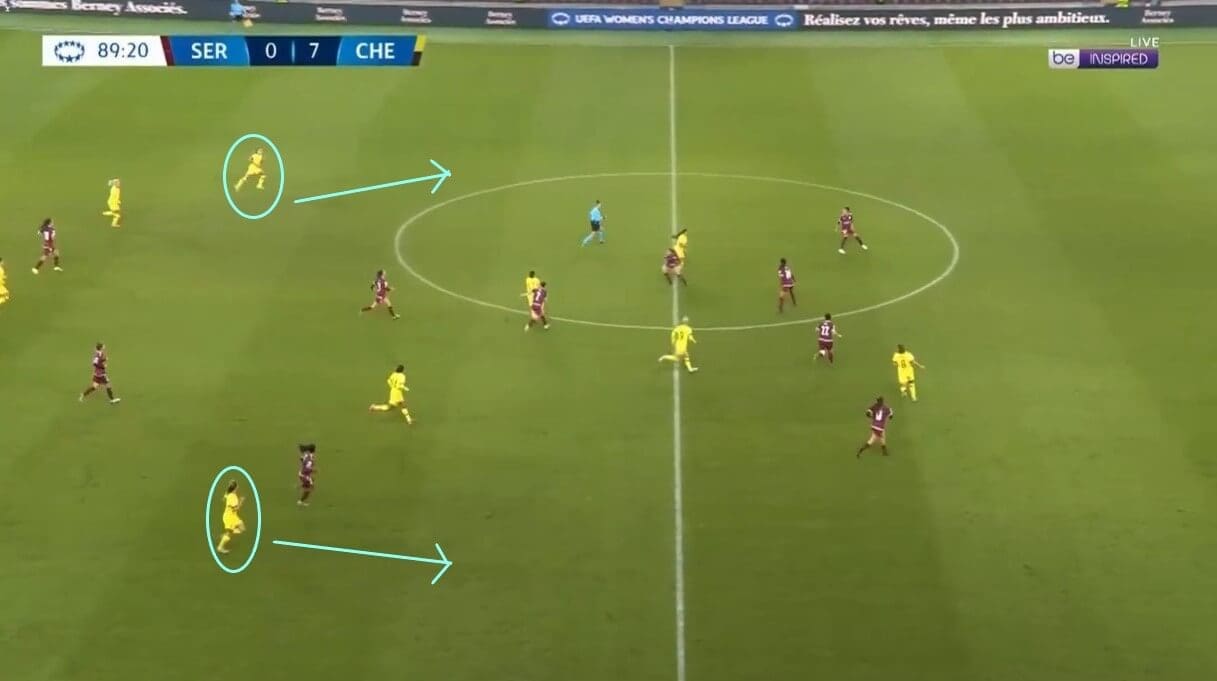
The first thing to mention is that she has a good understanding of the wing-back role, which is essential when playing for Chelsea. Here, Servette Chênois Féminin, who won the Swiss Women’s Super League title for the first time last season, have looked to attack with numbers against Emma Hayes’ side in their recent Champions League clash. However, Chelsea have won the ball and are now looking to play out from the back, with Fox, who was the left wing-back in this game, moving towards the wing at the same time as Niamh Charles, who was in the same position on the right.
As the arrows show, this gives Chelsea good width, making the pitch as big as possible and making it harder for Servette to win the ball back, as the Swiss team would need to move away from each other to have any chance of regaining possession. Therefore, Fox is good at the basics of the wing-back role, tracking back to help her team and moving towards the centre-backs, but then running diagonally outwards again once they have the ball.
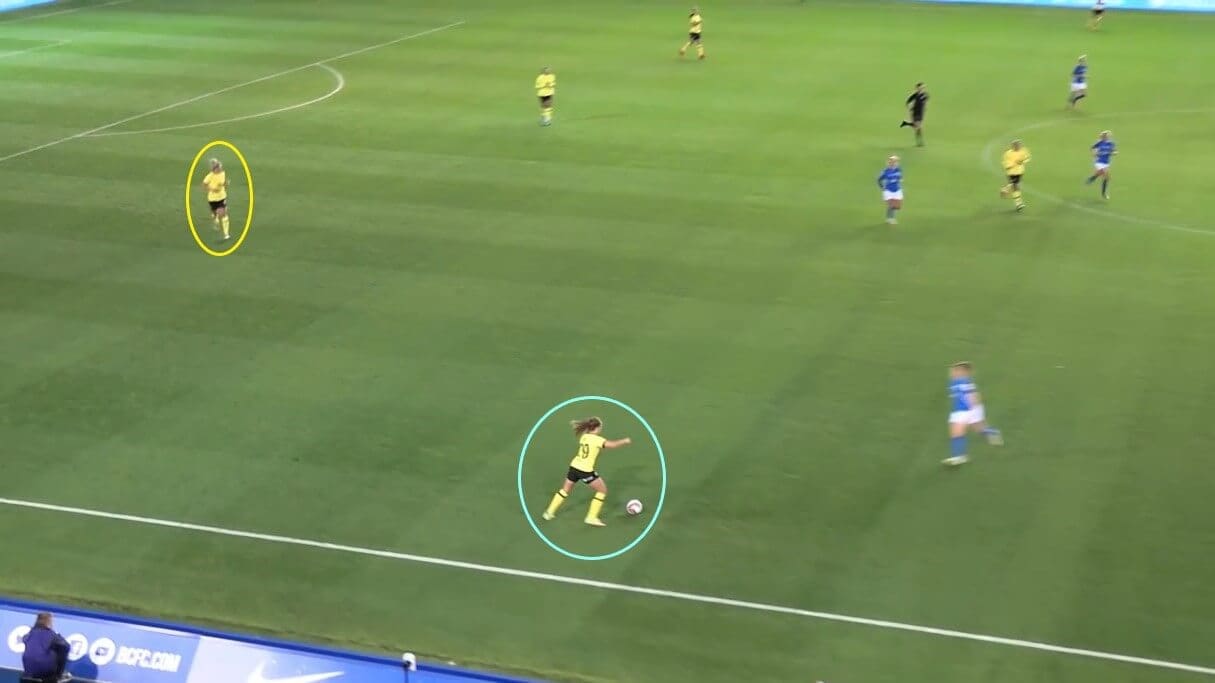
It is also notable that she plays ahead of the centre-backs, rather than moving backwards to form a flat back five. If she did this, it would mean that Millie Bright, in the yellow circle, would need to make a sideways pass here, which would not gain Chelsea any ground. However, because Fox is further up the pitch, the ball has to go forwards from Bright, which means that Birmingham City Women need to try and win it further away from the Chelsea goal. Given that Scott Booth likes his team to attack with numbers in the final third, allowing them to pass the ball around opposing defenders and into the goal area, Chelsea must have space in front of their goal to prevent Birmingham from getting players behind them, should they win the ball. Therefore, again, these small details have a lot of influence in helping Chelsea to control games and dictate how their opponents play against them.
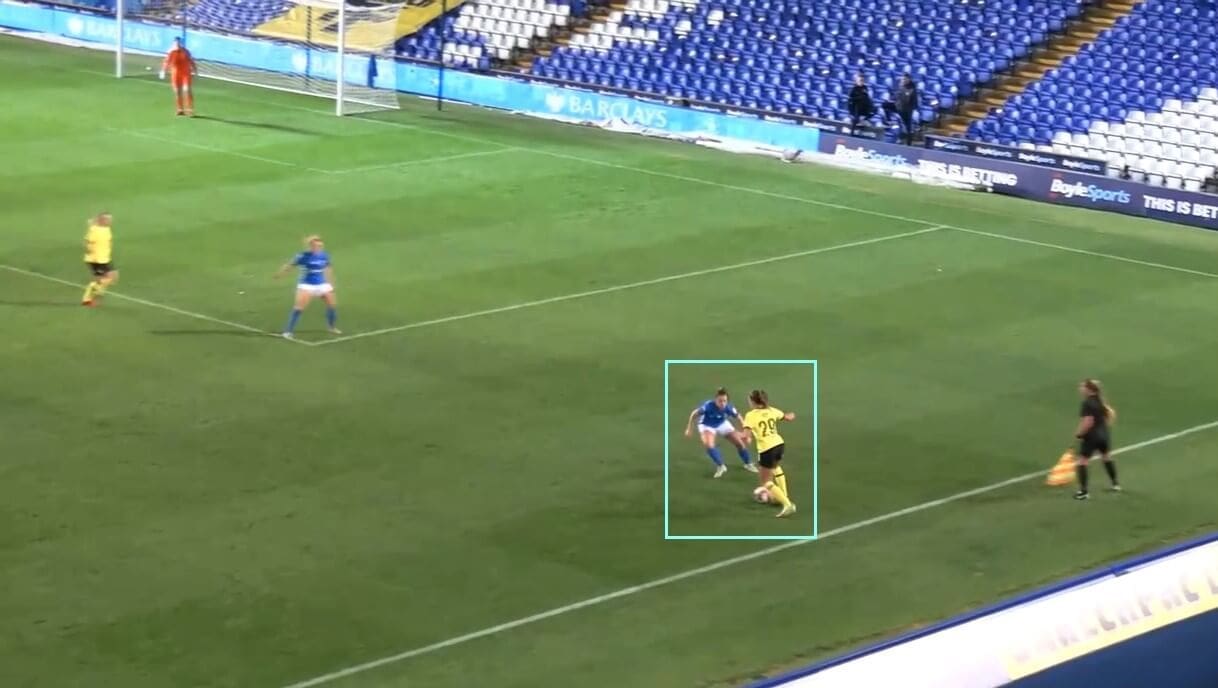
When in attacking situations, Fox tends to stay as close to the sidelines as possible. This again helps to stretch the play out and make the pitch as big as possible, which is reflected by the way that the Birmingham full-back and left-sided centre-back have been drawn apart from each other here.
However, what really helps Chelsea in this situation is that Fox is capable of playing in tight spaces, which is why she likes to stay close to the lines. Birmingham have closed her down well here, preventing her from making a cross into the box, but she keeps her composure and passes backwards instead, ensuring that her teammates maintain their attacking momentum. Her passing accuracy this season for Chelsea stands at 78.6%, whilst she has got 73.3% of her forward passes on target, both of which reflect how she is a reliable player on the ball for her team and is capable of moving the ball into dangerous areas of the pitch as well as going backwards and keeping possession when necessary.
In attack
A lot of Jorja Fox’s contributions to Chelsea Women’s attacks come through her awareness in the final third. She has an excellent crossing ability and makes good decisions about where to run to, and these are both important qualities for wing-backs to have, as they are the players tasked with setting up goalscoring opportunities for those in the central areas.
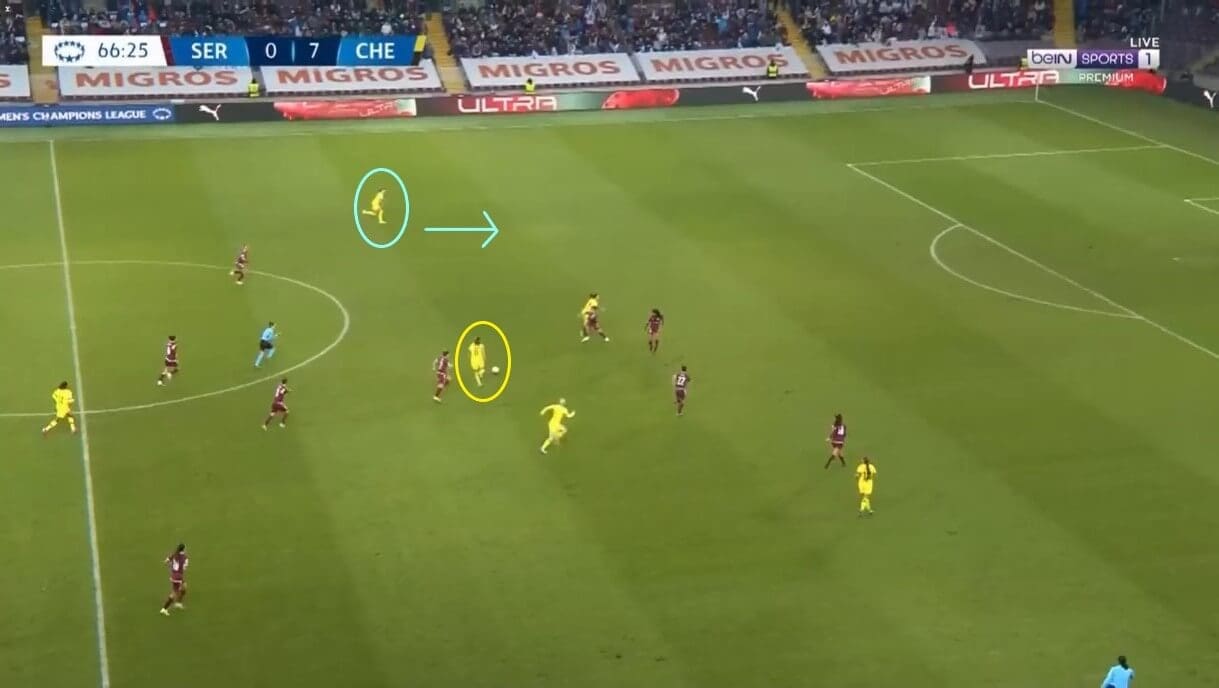
Here, Fox has noticed how Servette have congregated in the middle, with Germany midfielder Melanie Leupolz now looking to pass into the space outside the Swiss side’s narrow defence. Fox has anticipated this and has already started to run forwards when the former Bayern Munich Frauen player turns and looks for the pass.
This shows how Fox is the type of player who gets into areas early and is ready to receive the ball when her teammates want to pass it, rather than waiting for them to turn towards her and then making the move into space, which can slow play down and give the defenders time to close off the space. Again, with the wing-back formation enabling the three forwards to play closer together, the wing-backs need to control the wide areas, and Fox fits into these tactics well through her movement and anticipation of play.

We mentioned how the role of the wing-backs is to create goalscoring opportunities, and this image shows Fox setting up a chance. However, we need to focus on the area of the pitch that she is crossing from, as that is the key point here. Instead of dribbling towards the goal line and then trying to pull the ball back, as a lot of players do, she has instead made the cross earlier than some may have expected, which means that the opposing defence, in this case, Birmingham, don’t have the same time to set up and win the ball in the air. As a result, there is more space available for Chelsea to exploit, with Fox’s cross here finding Australia striker Sam Kerr, who heads into goal under little pressure.
Therefore, the early cross from Fox led directly to a goal, with Birmingham not having time to get back and clear the ball. This is another quality that the young full-back brings to the team as an attacker, and it means that the wide forwards don’t have to get out and put crosses in, and can therefore focus solely on supporting the striker and getting on the end of balls into the box. Fox may only have a 30% crossing accuracy this season, but that doesn’t matter when we consider that the crosses she does put in have this sort of quality.
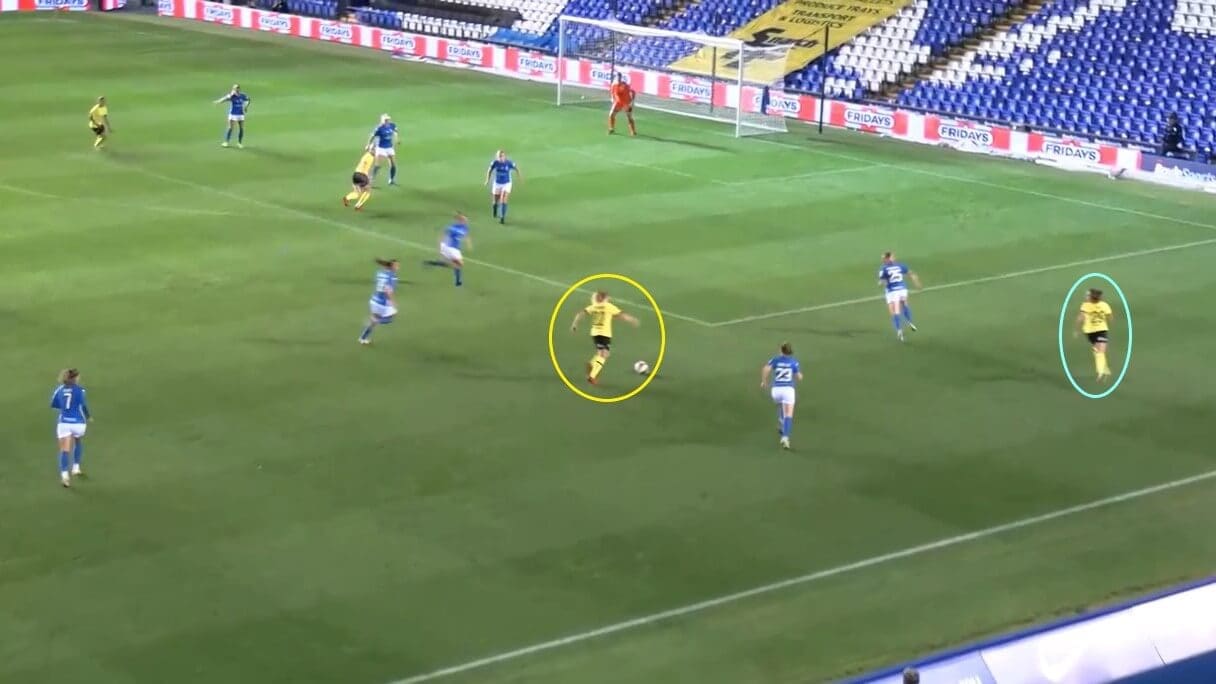
Whilst we have mentioned that Fox stays wide and allows the forwards to drift inside the pitch, it is not uncommon to see her link up with the wide forward on her side of the pitch, creating 2-v-1 structures against opposing defenders. Scotland’s Erin Cuthbert is one player who has really benefitted from Chelsea’s change in formation this season, as she has been at the heart of a lot of their creative play around the field.
However, in order to make Cuthbert’s freer role work, she needs someone to make runs into spaces around her to offer passing options, and we can see from this image that this is what Fox provides. It is common to see the young full-back moving behind defences and exploiting the spaces they leave open behind, such as in this example, which makes it harder for Birmingham to defend against them. If they move back to mark Fox, then Cuthbert has space to take the ball into the goal area; if they close Cuthbert down, the Scotland forward has the quality to time a pass through to Fox, and the attack will build through her instead. Against Birmingham, a lot of Chelsea’s forward play went down the right-hand side of the pitch, and the link-up play between these two players was a key component in their eventual 4-0 win.
In defence
In defence, Jorja Fox has just as important a role to play, getting back to plug gaps and prevent opposing teams from getting behind them. This is one reason why Chelsea Women have been hard to beat so far in this campaign.
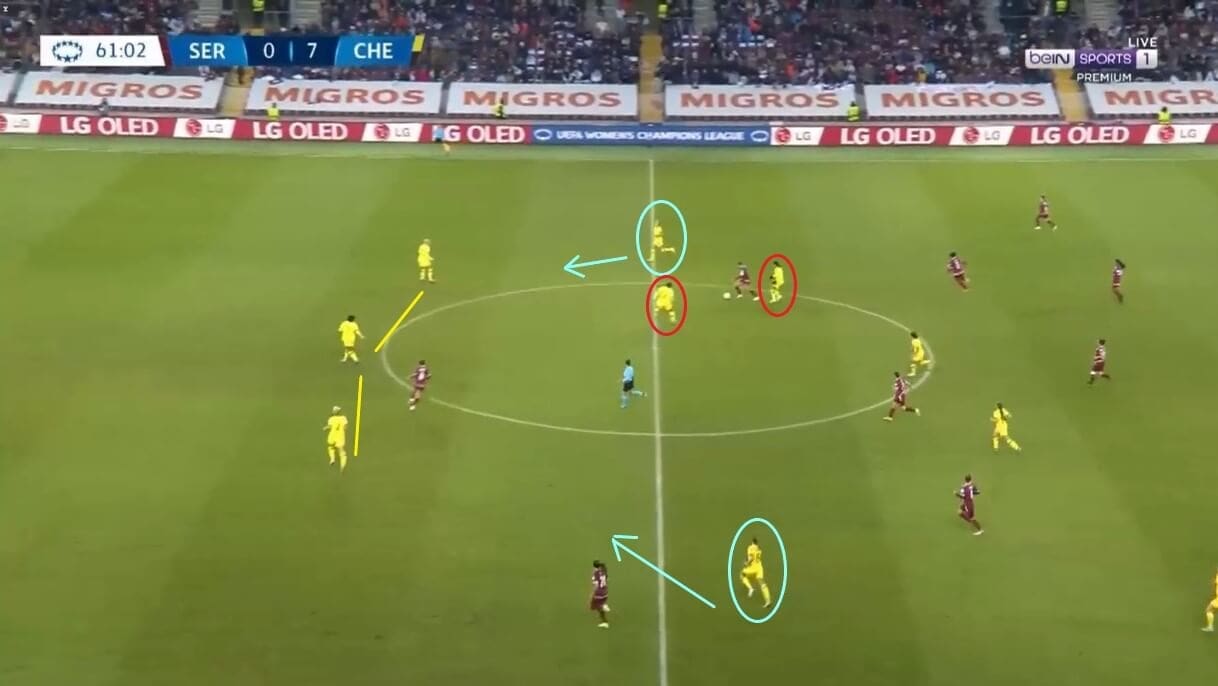
We have already looked at how Chelsea’s wing-backs get out from defence when the team reclaim possession in their own half, but this image illustrates the opposite, with Charles and Fox dropping back once Servette have the ball, looking to prevent them advancing too far up the pitch.
However, what is interesting is that neither moves all the way back, and instead both end their runs ahead of the back three, who have narrowed up in the middle. This leads us back to the previous point about Chelsea looking to play forward and not across the line, giving them more momentum in attack, but it also gives Chelsea the ability to surround the Servette players, and we can see the rough shape of this structure here.
By forcing the opposing attackers into this congested area of the pitch, the defence have allowed the midfielders to press the attackers and win the ball back. Without the wing-backs positioning themselves on either side of this, Servette would have been able to simply play the ball around the centre-backs, so having players who can get back and position themselves in such a way that ends opposing attacks early is important and as this image shows, Fox has those qualities.
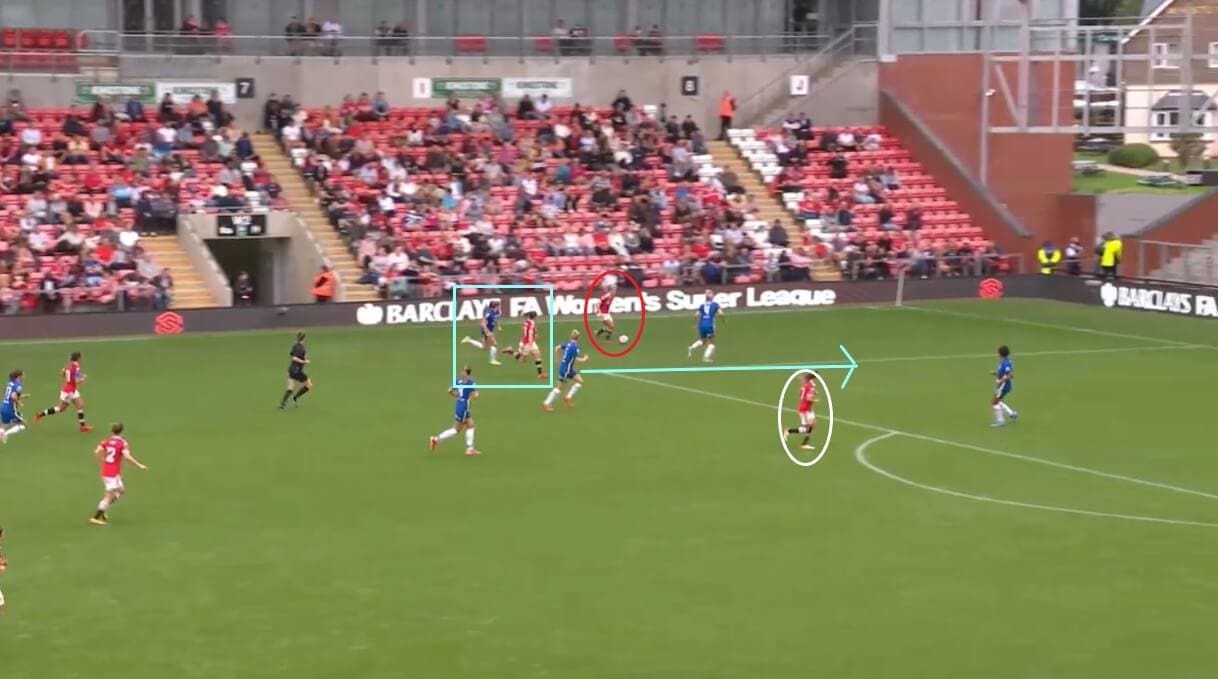
However, there are times when Fox needs to move back even further, and she does this well too. This demonstrates how she can fit into different tactical systems and perform any role required, which is another key thing to have at Chelsea. In this image, against Manchester United Women at the end of last season, we can see how England striker Alessia Russo has the ball on the far side of the pitch. Her teammate is making a run through the gap between Bright and Jess Carter, but Fox sees this and matches her run, as the blue arrow shows. This ensures that when Russo pulls the ball back, she can’t play the short pass into this player, as Fox would be in a perfect position to make an interception and clear the ball, and she has averaged 3.49 of them per game this season, whilst also winning 50% of her defensive duels. Therefore, Russo needs to play a longer pass into Ella Toone, in the white circle, but the fact that the ball travels longer to reach Toone gives Chelsea time to close her down and end the attack.
The key thing to take here is that Fox’s ability to get tight to players and follow them around the field ensures that Chelsea cut out potential passing options before other attackers release the ball, which forces the opposing team into moving it to where Chelsea are strongest. The other thing is that Fox can take up different roles in the defence, with her playing almost as a centre-back once she fills the gap here. This versatility is another reason that Emma Hayes wants her around the team this season because she can fill in if they ever have a lack of options at the back.
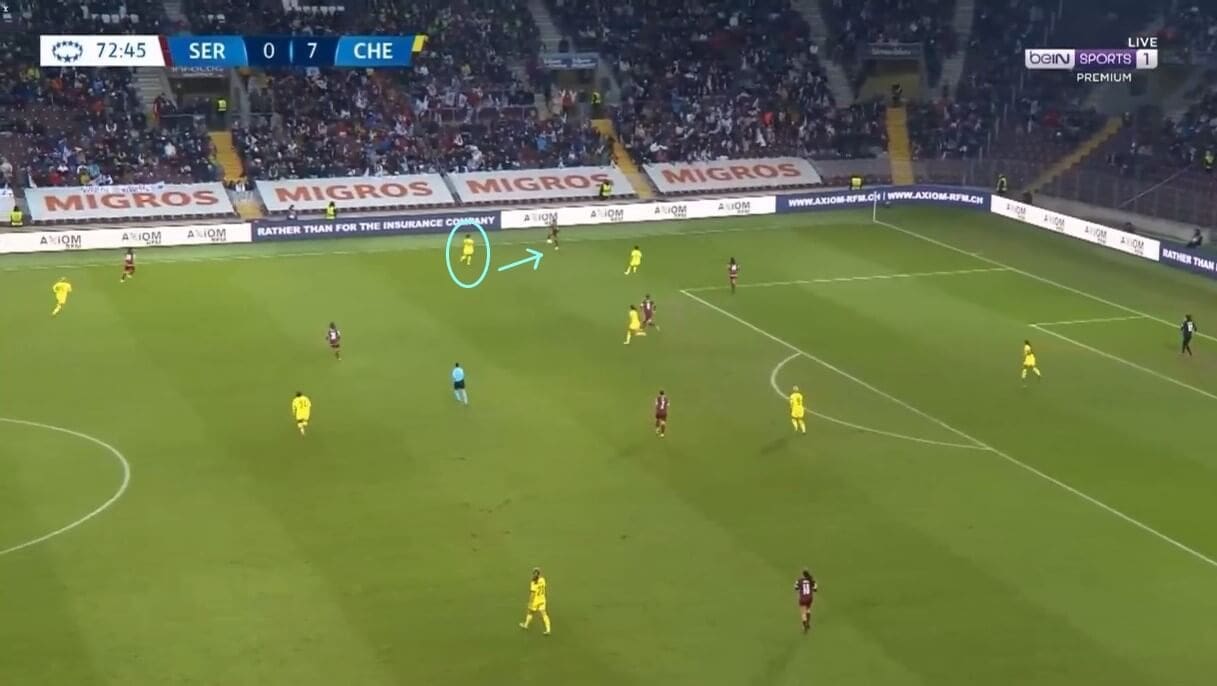
Whilst the two images so far in this section have shown Fox dropping back to help out when the opponents are already in their third, she is also good at closing players down higher up the pitch. In this image, Servette have won possession in their own half and are looking to play the ball up the field, launching an attack, but Fox has closed down the player with the ball and prevented this from happening. In doing so, she takes the element of surprise away from Servette, giving her teammates time to organise themselves behind her. As a result, when the Swiss champions did get the ball into the attacking third here, they weren’t able to turn it into a goalscoring opportunity.
If we compare this to the example in the previous section, when Fox crossed the ball in early for Kerr to head home before Birmingham had had a chance to organise themselves, then we can see the difference in defensive techniques, with Fox being an important part of that.
Conclusion
In conclusion, there is no doubting that Jorja Fox is a very promising player, and is not only one for the future of Chelsea Women, but for the now. This is because her qualities in attack and defence lend themselves to Chelsea’s tactics, particularly this season when she has been allowed to use her pace to move up and down the pitch, controlling the wings and creating goalscoring chances for her teammates.
Emma Hayes’ side are competing for four trophies this season, having already reached the 2020-2021 FA Cup final, whilst they are currently top of the WSL and their Champions League group. They will also enter the Continental Cup after the group stages have been completed. However, to win as many of those tournaments as possible, they will need strength in depth. Fox can play as a right or left wing-back, and could slot in as one of the outside centre-backs if required as well, so will give them exactly that.

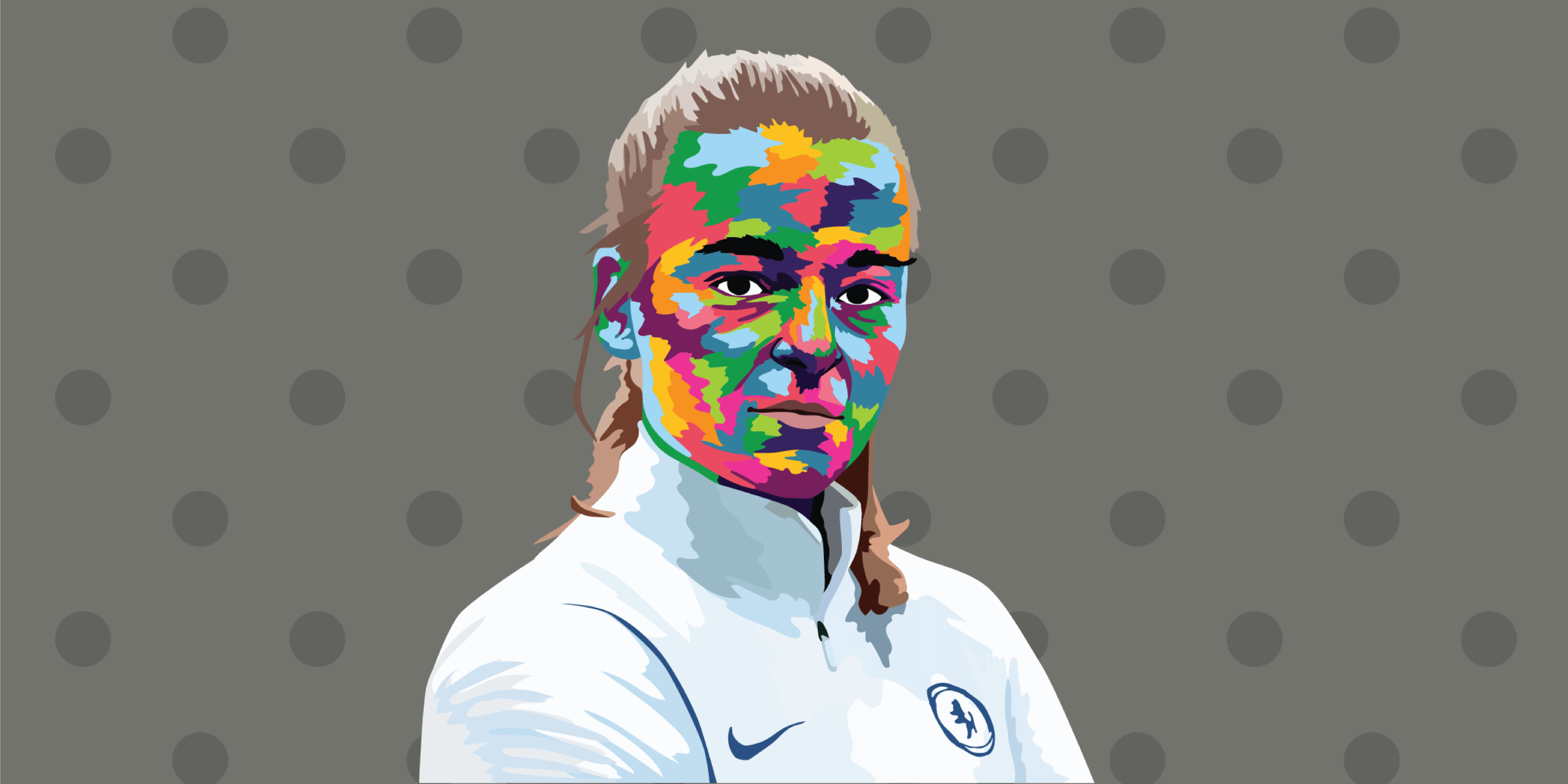



Comments